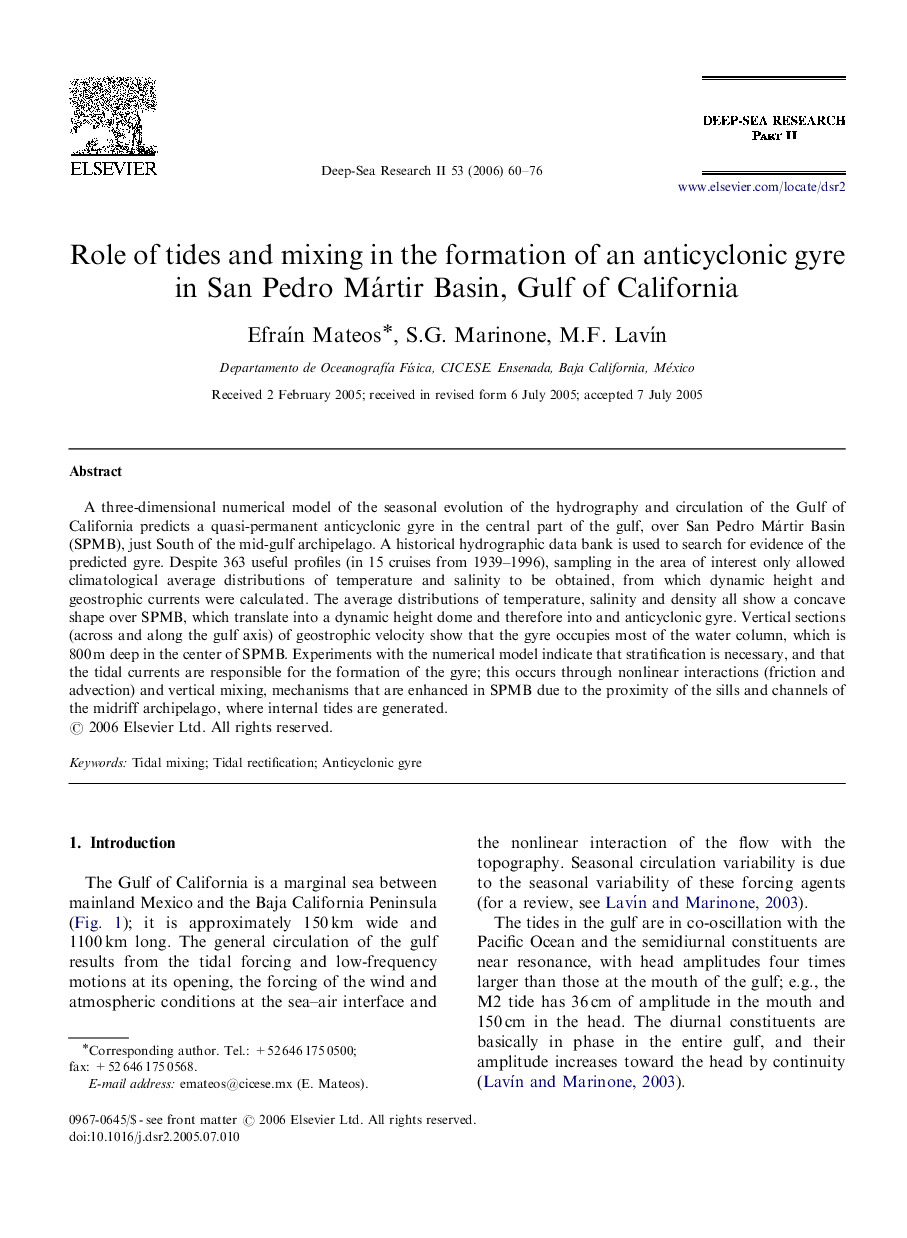| Article ID | Journal | Published Year | Pages | File Type |
|---|---|---|---|---|
| 4537464 | Deep Sea Research Part II: Topical Studies in Oceanography | 2006 | 17 Pages |
A three-dimensional numerical model of the seasonal evolution of the hydrography and circulation of the Gulf of California predicts a quasi-permanent anticyclonic gyre in the central part of the gulf, over San Pedro Mártir Basin (SPMB), just South of the mid-gulf archipelago. A historical hydrographic data bank is used to search for evidence of the predicted gyre. Despite 363 useful profiles (in 15 cruises from 1939–1996), sampling in the area of interest only allowed climatological average distributions of temperature and salinity to be obtained, from which dynamic height and geostrophic currents were calculated. The average distributions of temperature, salinity and density all show a concave shape over SPMB, which translate into a dynamic height dome and therefore into and anticyclonic gyre. Vertical sections (across and along the gulf axis) of geostrophic velocity show that the gyre occupies most of the water column, which is 800 m deep in the center of SPMB. Experiments with the numerical model indicate that stratification is necessary, and that the tidal currents are responsible for the formation of the gyre; this occurs through nonlinear interactions (friction and advection) and vertical mixing, mechanisms that are enhanced in SPMB due to the proximity of the sills and channels of the midriff archipelago, where internal tides are generated.
